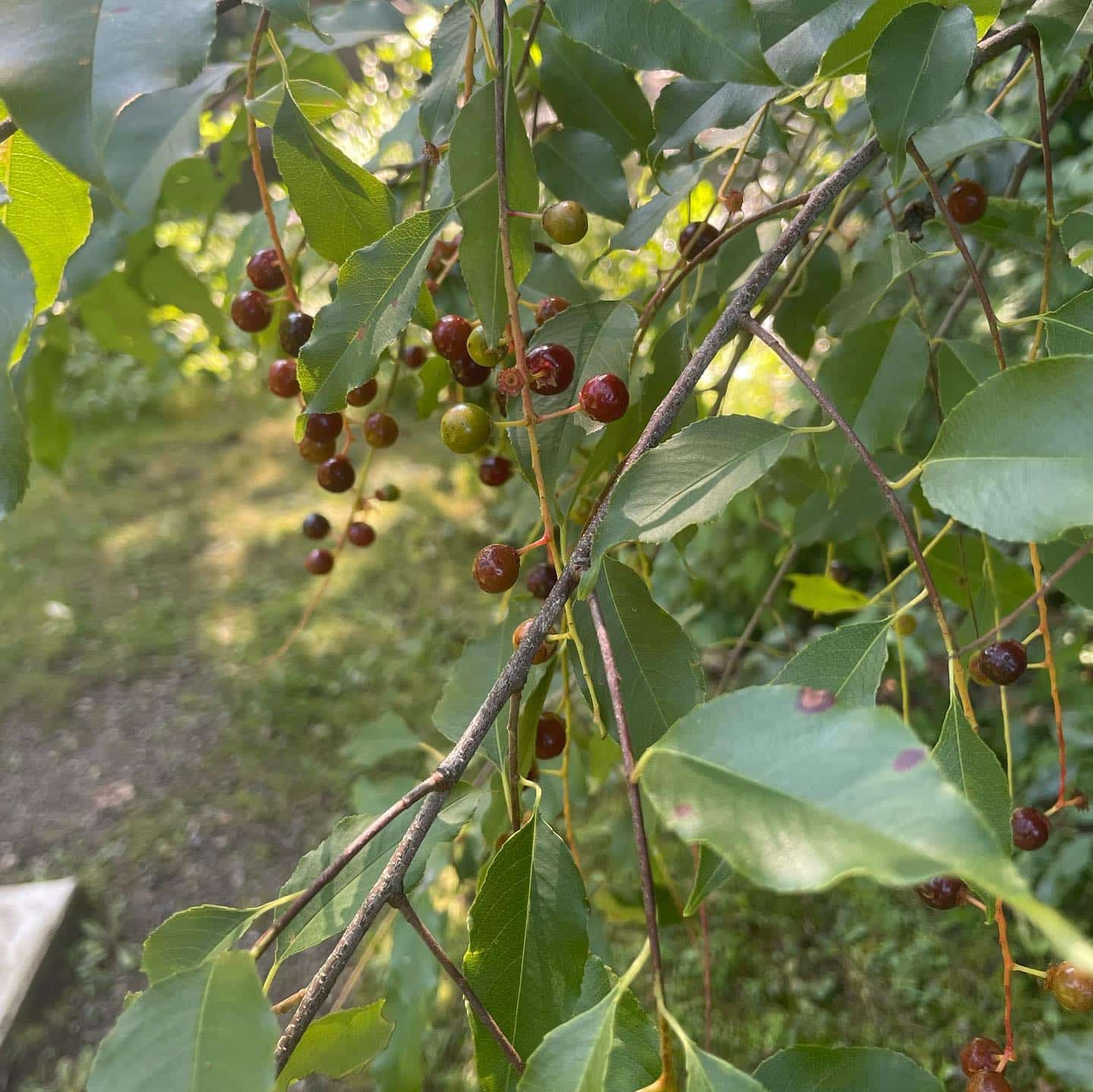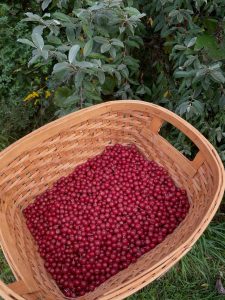Page Created by Connecticut Foraging Club
Upcoming Events | Meet the Instructors | Plant Archive | Mushroom Archive
----------------
Upcoming Events | Meet the Instructors | Plant Archive | Mushroom Archive
----------------
Wild Black Cherries (Prunus serotina) are a native plant that can be found in full sun. They grow up to 100 feet tall.

Young Black cherry trees have light gray bark with horizontal lenticels. As the tree ages, the bark becomes ridged or pleated. The ovate leaves are alternate and have small teeth. Snapping a twig will reveal a bitter almond scent due to the cyanide in the twigs.
Almost all parts of the Black cherry tree are toxic, besides for the fruit. Seeds, leaves, twigs, and bark all contain cyanide.

Black cherries have a grapefruit-like flavor. The fruit was traditionally used to treat coughs. It has 17 antioxidants as well as many vitamins, including magnesium, iron, and phosphorus.

Black cherries are often confused with Chokecherries (Prunus virginiana). Chokecherries have smaller berries, usually the size of a pea. The berries are edible, but much more astringent. Chokecherry leaves are wider and shorter, while Black cherries have narrower and more pointed leaves. Chokecherry trees are also much smaller, often presenting more like a shrub.
--
Written by Amy Demers, founder of the Connecticut Foraging Club. To learn more about foraging in Connecticut, check out our upcoming classes.






